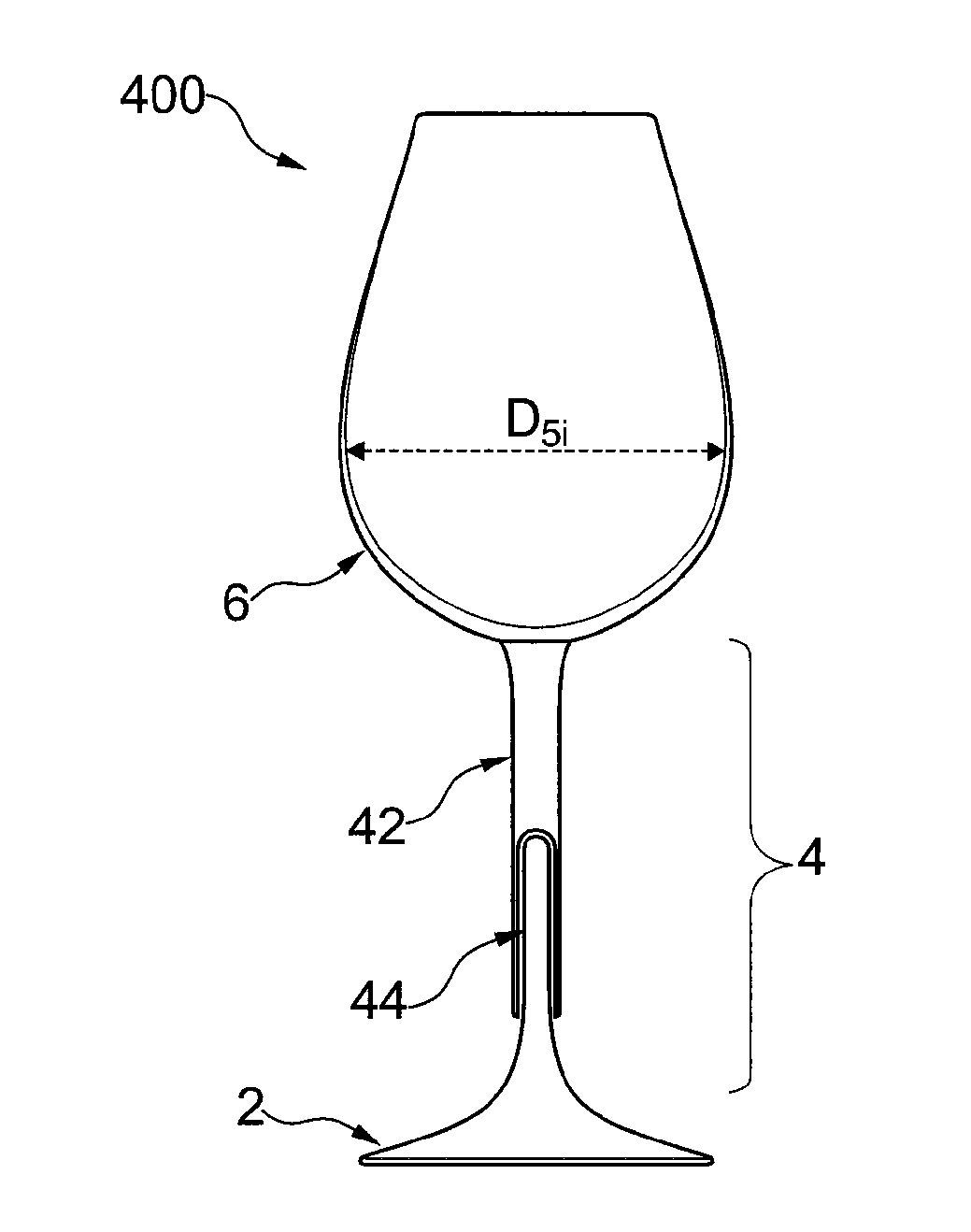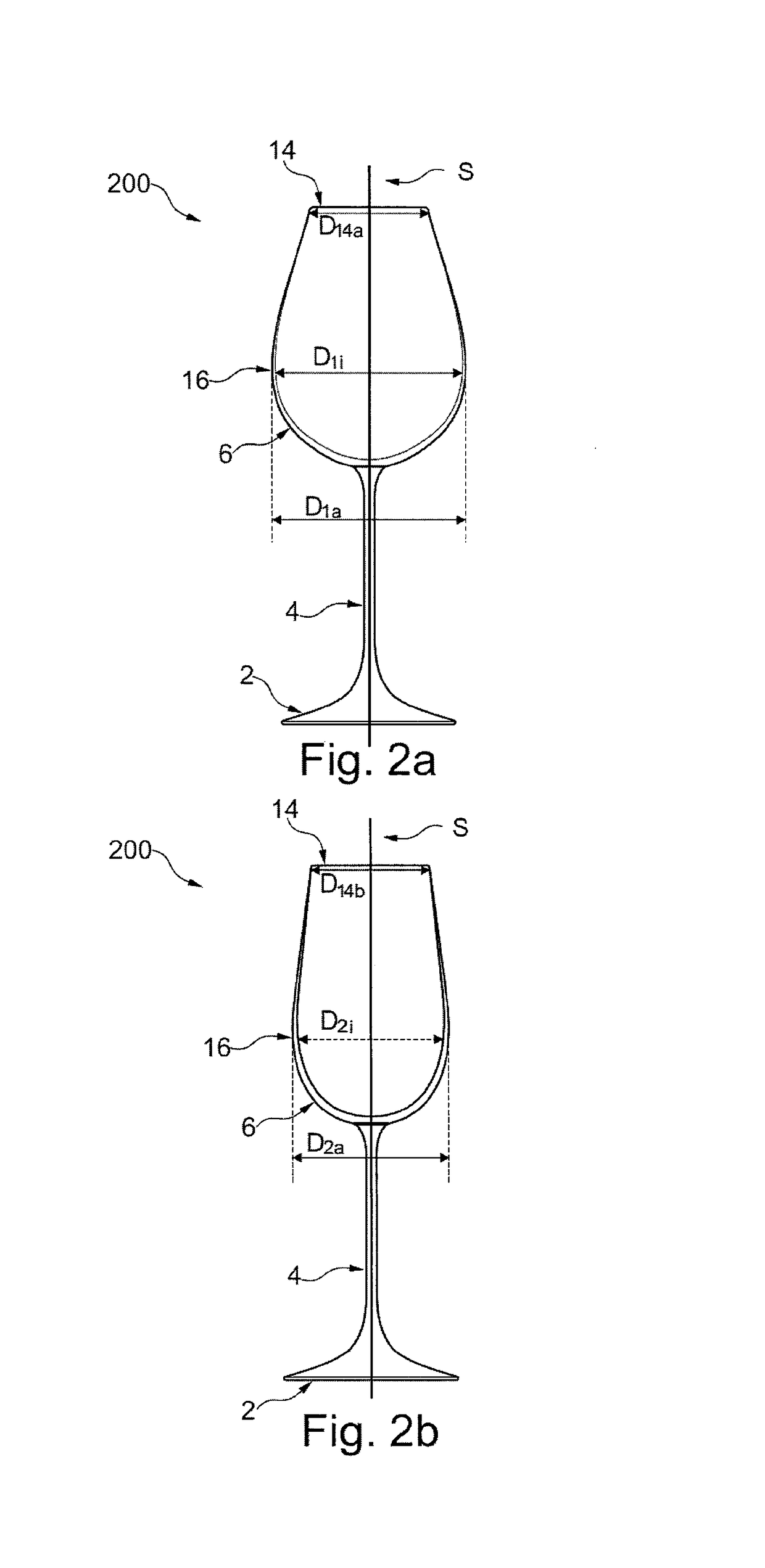Drinking vessel
a drinking vessel and beverage technology, applied in drinking vessels, drinking equipment, containers, etc., can solve the problems of insufficient mixing of wine and air, inability to allow a person-related or individual breathing of wine, and complicated design and production, etc., to overcome or reduce problems and deficiencies, improve the effect of mixing simple and feasible liquids, easy to manage and clean
- Summary
- Abstract
- Description
- Claims
- Application Information
AI Technical Summary
Benefits of technology
Problems solved by technology
Method used
Image
Examples
first embodiment
[0046]FIGS. 2a, 2b and 2c show a drinking vessel 200. This drinking vessel 200 can be configured as glass 200. In the description of the preferred embodiments, generally always glasses 200, 300, 400, 500 will be mentioned. However, this should not be understood as being restrictive. Rather, the person skilled in the art will understand that the features of the embodiments described herein can also be realized with other drinking vessels. As described above, also this glass 200 can have a foot 2, a stem 4 and a bowl 6. In the shown embodiment, the bowl 6 has a glass bulge 16. The glass bulge 16 is the area in which the bowl 6 has a maximum horizontal diameter. In the shown side view of FIG. 2a, the bowl 6 tapers towards the top so that a horizontal diameter in an upper or drink-wetted area of the glass, for example at the upper glass rim 14, can be clearly smaller than a diameter at the glass bulge 16. In the following, an embodiment in which, in a top view, the diameter is minimal a...
second embodiment
[0050]FIGS. 3a, 3b and 3c show the present invention. The same or similar elements have the same reference signs as in the previous Figures or similar ones. Not any element is discussed in detail if it is identical to that of the previously described Figures. The embodiment shown in FIGS. 3a to 3c shows a drinking vessel 300, which is configured, e.g., as a glass and which again comprises a foot 2, a stem 4 and a bowl 6. The bowl 6 comprises a glass bulge 116. In a first side view, which is shown in FIG. 3a (in view of the viewing direction, reference is again made to the structure with reference sign Ba in FIG. 3c), the glass 300 has an inner diameter D3i and an outer diameter D3a at the glass bulge 116. This inner diameter D3i is larger by twice a first glass thickness B1 than the outer diameter D3a. Furthermore, in the shown embodiment the bowl 6 tapers towards the top so that a horizontal diameter D114a at the upper glass rim 114 or in a waist area is smaller than the inner diam...
PUM
 Login to View More
Login to View More Abstract
Description
Claims
Application Information
 Login to View More
Login to View More - R&D
- Intellectual Property
- Life Sciences
- Materials
- Tech Scout
- Unparalleled Data Quality
- Higher Quality Content
- 60% Fewer Hallucinations
Browse by: Latest US Patents, China's latest patents, Technical Efficacy Thesaurus, Application Domain, Technology Topic, Popular Technical Reports.
© 2025 PatSnap. All rights reserved.Legal|Privacy policy|Modern Slavery Act Transparency Statement|Sitemap|About US| Contact US: help@patsnap.com



